Crassula is one of the most common and beloved houseplants by flower growers. It is phenomenally unpretentious, survives with any care errors, withstands both bright light and shading, and can go without watering for a long time. And at the same time, this succulent has a spectacular appearance, is easy to shape and cut, allowing you to create spectacular compositions and bonsai . In addition to the classic and well-known money tree, there are various hybrid forms and varieties that are very interesting in appearance and just as unpretentious in culture.
Despite the undemanding care at home, Crassula has some biological features, the knowledge of which will allow the plant to create optimal conditions for growth and development, as a result of which it will always look healthy and well-groomed. Let us consider in more detail where it is better to place a crassula pot, how to care for a flower and how to propagate it, as well as those few difficulties that are encountered when growing a crop.
How to care for Crassula at home
Crassula is one of the few indoor plants that develops normally even on southern windows in direct sunlight. Optimal for him would be placement in the southeast, the flower grows well on the eastern windows.
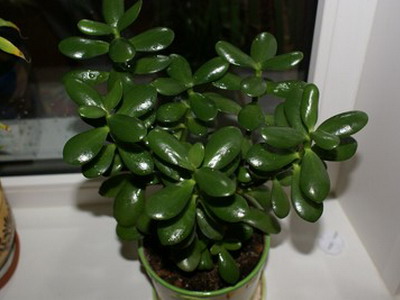
With a lack of light, the plant will also not die, but will have more elongated shoots and pale leaves. The reddish color of the stems and foliage inherent in some species and varieties will not appear on the northern windows. After winter or long cloudy weather, it is better to gradually accustom the flower to bright lighting in order to avoid burns.
The temperature of the content of the culture in summer and winter is different. When the plant is actively growing, it needs warmth (20-25 ° C) and fresh air, a crassula pot feels great at this time in the garden or on the balcony.

In the winter months, the flower needs a dormant period in a cool (8-10 ° C) room; it can withstand temperatures as low as minus 2 ° C. The culture winters well even under normal room conditions; it is not only recommended to place it near central heating batteries. It should be borne in mind that without a dormant period with low temperatures, shoots can stretch and leaves fall off the plant in winter.
Crassula pot
When choosing a pot for crassula, you need to take into account that its root system is shallow and very sensitive to waterlogging, and the crown is heavy and grows strongly in breadth. In order for the plant to grow well and be stable, it is recommended to plant it in heavy, wide and flat containers, the diameter of which should not be less than the diameter of the crown. At the bottom, there must be a hole for draining excess water and a drainage layer, for example, made of expanded clay, at least 2 cm thick. For greater decorativeness, only one tree is planted in one pot.

Soil for Crassula
Crassula soil can be purchased ready-made in specialized stores, or made independently. The culture is undemanding to its composition, soil for cacti or any other loose consistency, with a high content of coarse sand, fine gravel or agroperlite, is suitable for it. It is useful to add crushed charcoal to the ground, which will protect the roots from rotting in case of excess moisture.

Crassula transplant
At home, the flower requires minimal care. Crassulas are rarely watered, only after the surface layer of the soil has completely dried out, because, like all succulents, they tolerate overdrying better than excess moisture. Waterlogging is especially dangerous in winter, at this time the watering of the crassula is sharply limited, for an adult plant – up to once a month or less. The flower signals a lack of moisture with soft leaves. The water should be lukewarm or room temperature, the preferred watering time is evening.
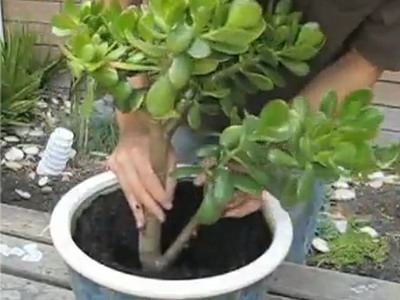
The plant responds well to the dry air of city apartments; it does not require additional spraying. To clean the sheet plates from dust, it is recommended to wipe them from time to time with a damp cloth. You can wash the flower in the shower, not forgetting to cover it with an earthen bag.
The culture does not need abundant and frequent feeding; in spring and summer, it is enough to carry them out once or twice a month, using any liquid fertilizer for cacti for this. In winter, the tree is also occasionally fed, reducing the concentration of the solution by half. Top dressing is applied only to moist soil, immediately after watering. If the succulent is transplanted into new soil with enough compost, grows well, and has large leaves, it can be omitted from fertilizing.
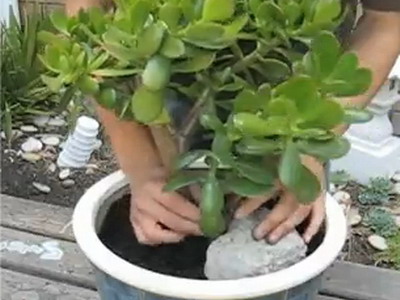
It should be noted that in the collections of indoor plant lovers and stores there are not only the well-known “money tree”, but also other types and varieties of crassula. Their cultivation at home has much in common and differs only in minor details. So, varieties with a waxy or silvery coating on the leaves are better protected from sunburn, therefore, for example, for a hybrid Crassula mix, care provides for brighter lighting than for Lycopsus or Purslane, which grow well in some shade. Different sizes and growth vigor also lead to some differences in care.
Caring for Crassula “The Hobbit”
Crassula the Hobbit, a common cultivar of the oval fat woman, for example, is more compact than the parental natural species. It grows slowly and itself, without human intervention, forms a knotted stem of an interesting bonsai shape.
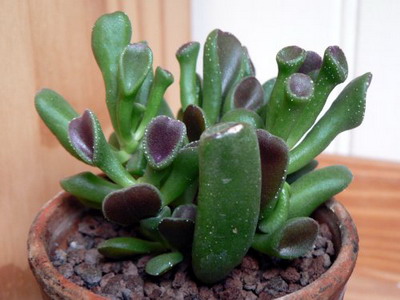
The oval fat woman itself needs pruning, which is preferably started at a young age, when the shoot reaches a height of about 15 cm. It is pinched, leaving two large leaves at the top, branching will continue from this point. In the future, to obtain a bushy crown, the resulting shoots are pinched again. The place of breaking is recommended to be disinfected with crushed coal. Similarly, an old tree can be formed by removing excess shoots, however, in this case, stumps form at the site of the break. It is better not to remove the leaves remaining on the lignified trunk; over time, they will fall off on their own.
When is a Crassula transplant necessary?
Crassula transplantation is recommended to be done at intervals of once a year for young ones and once every 3-4 years for adult specimens. Transplanted in the spring, usually after the entire pot is filled with roots. In order not to injure the plant, they transship with a clod of earth into a low container of a larger diameter, filling the voids with fresh soil.

If the root is too long, it is cut so that it is completely placed in a new vessel. Plantings are watered very carefully, avoiding overflow, which can lead to rotting of the root system. Note that moving to a wider pot stimulates the growth of the tree, so this can be done even twice a year to speed up growth. If you want to keep the compact size, transplanting is done as infrequently as possible, using small containers or only replacing the ground.
Crassula reproduction
The ease of propagation of Crassula is one of the advantages of this succulent. Both vegetative and seed methods are used, but the latter is rarely used, since it is not difficult to propagate Crassula with leaf and stem cuttings. You can cut the plant at any time, but in winter, additional lighting and protection from hypothermia are usually necessary for the best. Harvested cuttings are dried for 2-3 days, after which they are planted in bowls with light permeable soil, consisting, for example, of leafy, soddy soil and sand in a ratio of 2:1:1. You can root them in water by adding activated charcoal for disinfection. After the appearance of the roots and the beginning of growth, the seedlings are placed one at a time in pots with a diameter of 5-7 cm.
For seed propagation, soil is used from two parts of leafy soil and one part of sand, plantings are covered with glass, sprayed regularly before emergence and aired every day. Seeds germinate in two weeks, after which they are dived at a distance of 1 cm from each other and placed in a bright place. When young plants begin to grow actively, they are transplanted one at a time to a permanent place, using the same soil composition and the same containers as when propagated by cuttings.
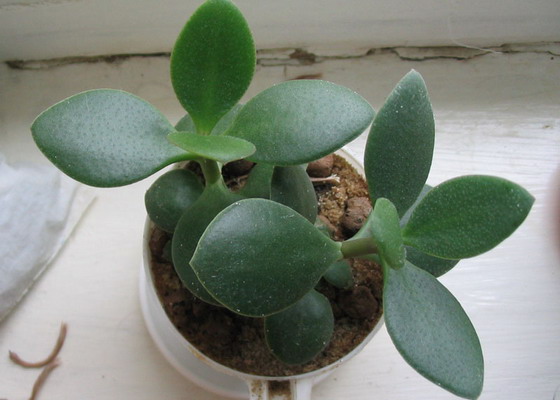
Crassula care in the photo
Above, for greater clarity, are illustrations of some stages of care: a photo of Crassula “money tree” before and after pruning, the process of plant transplantation, sowing seeds, rooting leaf and stem cuttings.
Crassula: falling leaves and other problems with solutions
The flower is highly resistant to various adverse factors. The culture is tolerant of care errors, consisting in violation of the temperature or light conditions, tolerates the lack of watering or top dressing. Much worse this succulent withstands excessive care.
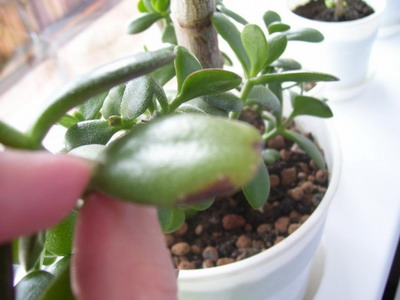
Too much moisture is especially detrimental to it, which, in the absence or poor quality of drainage, can cause water stagnation and lead to Fusarium rot.
This is one of the most common diseases of Crassula, affecting its root system, then passing to the root collar, as indicated by a characteristic white-pink coating, and flower leaves.
A diseased plant usually dies. Only at an early stage can one try to save it by transplanting it into new soil, while the old earth must be completely removed and the rotten parts of the rhizomes carefully cut off. Prevention of this disease is the observance of the irrigation regime, which necessarily alternates with the drying of an earthen coma.
Why do Crassula leaves fall?
Leaf drop is another fairly common problem.
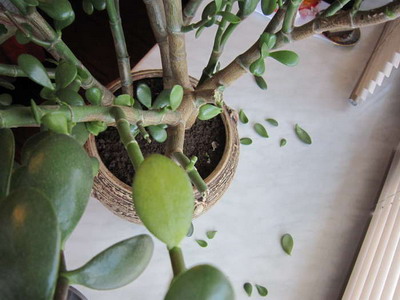
The reasons for this flower behavior may be as follows:
- waterlogging, which is described in detail above;
- excessive use of fertilizers;
- temperature too high.
A plant that has fallen into extreme conditions for itself is trying to leave offspring as soon as possible, which is why the leaves fall from the Crassula, from which young plants are formed in nature. In order to save such a flower, you need to remove the traumatic factor: transplant it into a new soil after waterlogging or excessive feeding, move it to a cooler room in case of overheating. In extreme cases, when all the leaves have fallen, you can cut off the top of the stem and root it.
The lack of flowering is common for indoor crassulas, even with good care they rarely bloom and only at a very mature age. In order to achieve flowering, the culture must be kept in sufficient light and provide it with a full dormant period with low air temperatures and limited watering.

Occasionally, succulents are affected by common pests: scale insects, false scale insects, mealybugs or aphids. Methods of dealing with them are standard: mechanical removal of pests under a warm shower or rags soaked in alcohol, with a high degree of infection – treatment with systemic insecticides.







